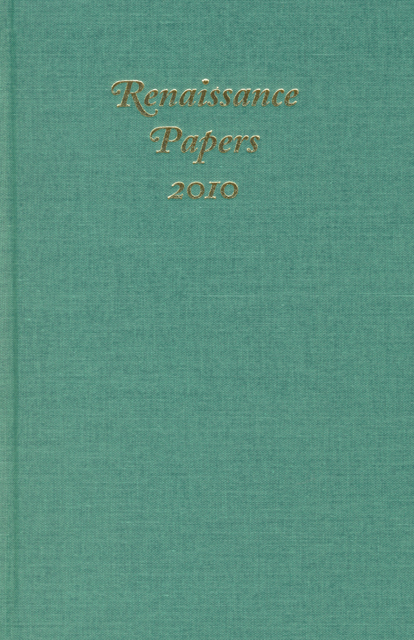Book contents
- Frontmatter
- Contents
- Renaissance Papers
- Aretino’s Life and His Afterlife in England
- Mixing Genres in George Peele’s David and Bethsabe
- Royal Prerogative versus the Common Law in A View of the Present State of Ireland and The Faerie Queene, Book 5
- The Limits of Clowning in the Age of Marprelate: The Anti-Martinist Tracts and 2 Henry VI
- Shakespeare’s Iago
- Francesco Patrizi da Cherso, Caravaggio, and the Metaphysics of Light
- Being John Donne in 1602
- The Problem of the Human in Sir Francis Bacon
- The Glamorous Echoes of Godly Print
- “More cullors than the Rainbowe caries”: Catholics, Cosmetics, and the Aesthetic Economy of Protestant England
The Glamorous Echoes of Godly Print
Published online by Cambridge University Press: 10 February 2023
- Frontmatter
- Contents
- Renaissance Papers
- Aretino’s Life and His Afterlife in England
- Mixing Genres in George Peele’s David and Bethsabe
- Royal Prerogative versus the Common Law in A View of the Present State of Ireland and The Faerie Queene, Book 5
- The Limits of Clowning in the Age of Marprelate: The Anti-Martinist Tracts and 2 Henry VI
- Shakespeare’s Iago
- Francesco Patrizi da Cherso, Caravaggio, and the Metaphysics of Light
- Being John Donne in 1602
- The Problem of the Human in Sir Francis Bacon
- The Glamorous Echoes of Godly Print
- “More cullors than the Rainbowe caries”: Catholics, Cosmetics, and the Aesthetic Economy of Protestant England
Summary
Arise for it is Day
—Motto of John Day’s print shopFrom roughly 1557, the charter year of the London Company of Stationers, there was within the City of London an increase in the circulation of printed works and an unprecedented increase in literacy and semi-literacy within a growing population increasingly able to afford cheap printed works. As scholars of literacy during this period have repeatedly pointed out, it is difficult to determine precise levels of literacy during the Elizabethan period. What is more pertinent is recent research into the accelerated relationship between literacy and word of mouth, what David Cressy calls the “spillover from the literate to the illiterate.” There was also a spillover from illiterate or oral culture into literate or print culture; and while it is doubtful that Elizabethan London went through a wholesale transformation from orality to literacy, the city certainly saw an unprecedented upsurge in the popular exchanges between the culture of print and what was spoken or heard on the streets. Recent study of early modern sound and hearing, much of it dealing with the public theater, prompt a more detailed examination of how specific physical structures worked as echo chambers to process speech acts both on and off the stage. Here I shall examine the physical area of Paul’s Cross and how this venue echoed the sounds of religious print well before the era of the theaters.
The first significant cycle of the echo of print erupted during the years immediately following the Stationers’ charter and before the echoes of print made their way, years later, to major public theaters. By the Elizabethan period if not before, the area in and around Paul’s Church had become more of a public marketplace than a holy church. Surrounded by booksellers, the great nave, Paul’s Walk, became a vast echo chamber for printed works, a place where newsmongers came to hear what John Earle later called its “strange humming or buzze, mixt of walking, tongues and feete.” This is where, according to Ben Jonson, ungainly and pretentious fops attempted to speak and act out the manners prescribed or proscribed in books sold, in a number of cases, at the west door of the nave.
- Type
- Chapter
- Information
- Renaissance Papers 2010 , pp. 123 - 134Publisher: Boydell & BrewerPrint publication year: 2011



